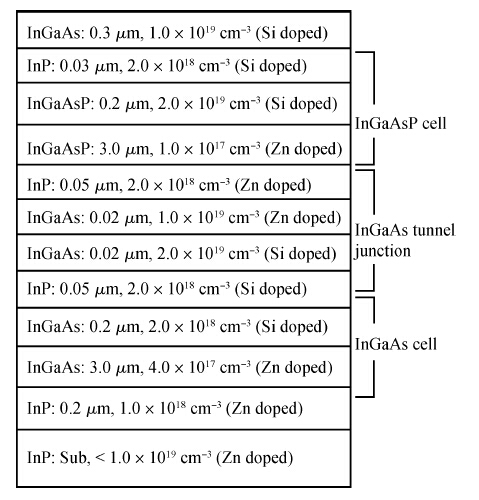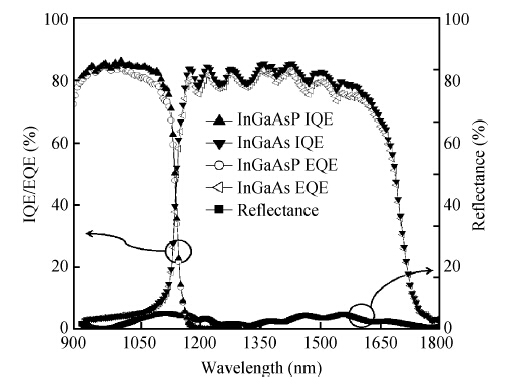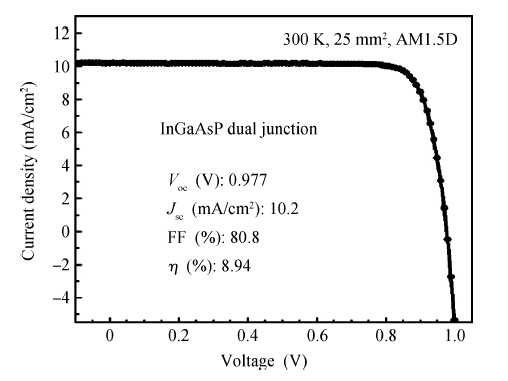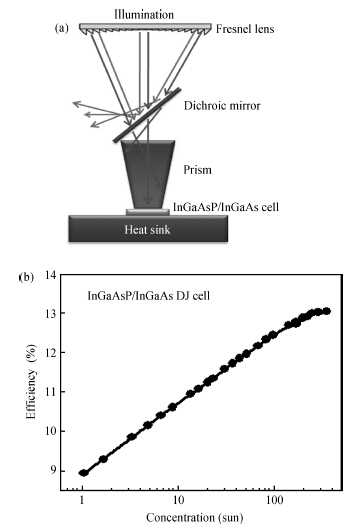| Citation: |
Yongming Zhao, Jianrong Dong, Kuilong Li, Yurun Sun, Xulu Zeng, Yang He, Shuzhen Yu, Hui Yang. InGaAsP/InGaAs tandem photovoltaic devices for four-junction solar cells[J]. Journal of Semiconductors, 2015, 36(4): 044011. doi: 10.1088/1674-4926/36/4/044011
****
Y M Zhao, J R Dong, K L Li, Y R Sun, X L Zeng, Y He, S Z Yu, H Yang. InGaAsP/InGaAs tandem photovoltaic devices for four-junction solar cells[J]. J. Semicond., 2015, 36(4): 044011. doi: 10.1088/1674-4926/36/4/044011.
|
InGaAsP/InGaAs tandem photovoltaic devices for four-junction solar cells
DOI: 10.1088/1674-4926/36/4/044011
More Information
-
Abstract
Lattice-matched InGaAs(P) photovoltaic devices were grown on InP substrates by metal-organic chemical vapor deposition. InGaAsP/InGaAs (1.07/0.74 eV) dual-junction (DJ) solar cells were fabricated and characterized by quantum efficiency and I-V measurements. The open circuit voltage, short circuit current density, fill factor, and efficiency of InGaAsP/InGaAs DJ solar cell are 0.977 V, 10.2 mA/cm2, 80.8%, and 8.94%, respectively, under one sun illumination of the AM 1.5D spectrum. For the InGaAsP/InGaAs DJ solar cell, with increasing concentration, the conversion efficiency first increases steadily and reaches 13% around 280 suns, and finally decreases due to the drop in fill factor at higher concentration ratios. These experimental results demonstrate the promising prospect of GaInP/GaAs/InGaAsP/InGaAs four-junction solar cells.-
Keywords:
- lattice-matched,
- InGaAs(P) solar cells,
- MOCVD
-
References
[1] [2] [3] [4] [5] [6] [7] [8] [9] [10] [11] [12] [13] [14] [15] [16] [17] [18] [19] [20] [21] [22] -
Proportional views






 DownLoad:
DownLoad:


















